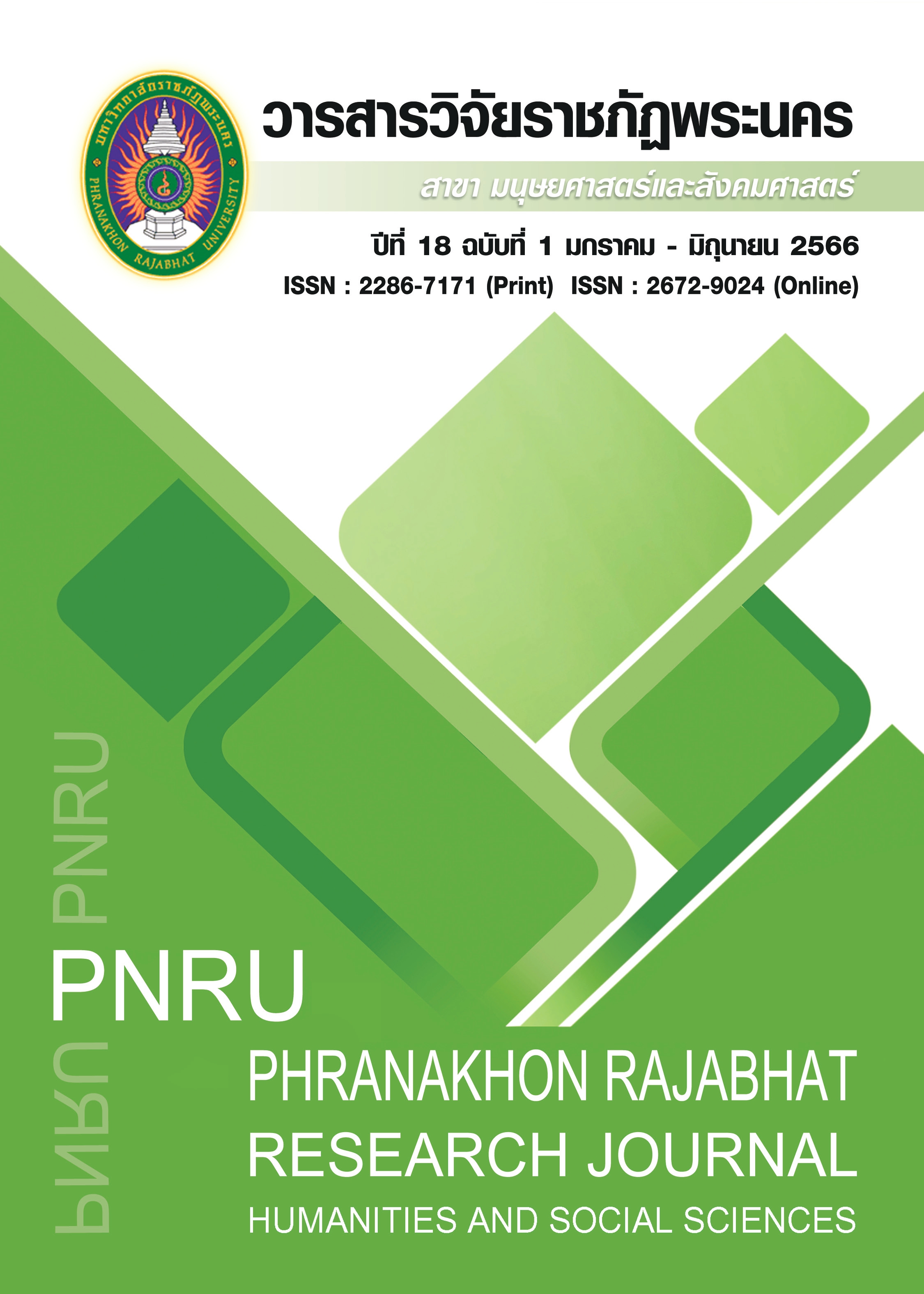DESIGN AND DEVELOPMENT GUIDELINES FOR BATIK PRODUCTS, BAN NA TOEI, THAI MUEANG DISTRICT, PHANG NGA PROVINCE
Main Article Content
Abstract
This research on the design and development of batik products at Ban Na Toei, Thai Mueang District, Phang Nga Province aims to study the history and current condition of batik products and to examine the design and development of fabric products using qualitative research. 40 participants as a key informant group of the research consisted of a cluster sample of 20 people, 5 community leaders, and 15 practitioners. The results of the research found that the history of Na Toei batik products since 2015 the Na Toei community under the governance of the Na Toei Subdistrict Administrative Organization has implemented a policy to restore and develop the community batik handicrafts to be outstanding again. Regarding the batik design, the group chose colors that shared a similar tone but were not too flashy; namely, purple is most frequently used and followed by white, light purple, and dark purple, respectively. The turtle was painted in purple and notably, its tone was darker than the other colors used in the fabric. Regarding the batik motifs, a turtle-figure pattern is used to reflect Thai Mueang communal identity and to promote a species of carambola turtle which is nearly extinct. Most of the participants were female and the batik products often depict local plant motifs, accompanied by floral motifs including Monkey Cups, Toei Na, Orchid, Frangipani, and Hibiscus patterns along with sea motifs. For the batik product development at Ban Na Toei, Thai Mueang District, Phang Nga, six aspects of guidelines have been proposed; 1) expansion of production to more than 30 percent from the previous year, 2) greater focus on production which does not affect the environment, 3) approaches to developing unique products which distinct from others using Thai wisdom and packaging design which are able to convey its local identity, 4) increasing communal involvement by allocating some of the profits to the community, 5) guidelines on product sales with an over-25-percent increase compared to the previous year, and 6) guidelines on relevant training and workshops for the group members to attend.
Article Details

This work is licensed under a Creative Commons Attribution-NonCommercial-NoDerivatives 4.0 International License.
Each publish articles were copyright by Phranakorn Rajabhat University
Any contents which appeared in each articles in the journal were authors personal opinion. It did not relate to Phranakorn Rajabhat University and other instructors in the university. Each authors would take responsibility on their articles. If there are any mistake, the authors will take responsibility themselves
References
Batik and Souvenir Center in Krabi. (2011). Knowledge of batik cloth. Retrieved from https://krabibatik.wordpress.com. [2017, 11 Sep.]
Jatusripitak N., & Aitrat R. (2019). Creative Economy From Creative to Economic Value. Retrieved from https://www.bangkokbiznews.com/blogs/columnist/123808. [2022, 9 Dec.]
Kanjanarat S., & Saengchai N. (2009). Research and development of models Natural color batik products in the community. The International Journal of the Arts in Society, 2, 88-96.
Raekpinit J. (2009). Labor Saring: The Economic and Socio-Cultural Relationship of Villagers in the South of Thailand. Journal of the Humanities and Social Sciences Thaksin University, 1, 59-77.
Supawiriyakon S. (2010). The designs of Batik cloth in Andaman provinces (805 Research). Phuket: Faculty of International Studies Prince of Songkla University Phuket Campus.
Tumtong, T. (2002). The art of batik hand painted. (1). Bangkok: O.S. Printing House.
Tunsakun K. (2014). Phuket administration towards a creative city. (Ph.D. thesis). Phuket Rajabhat University, Phuket.


